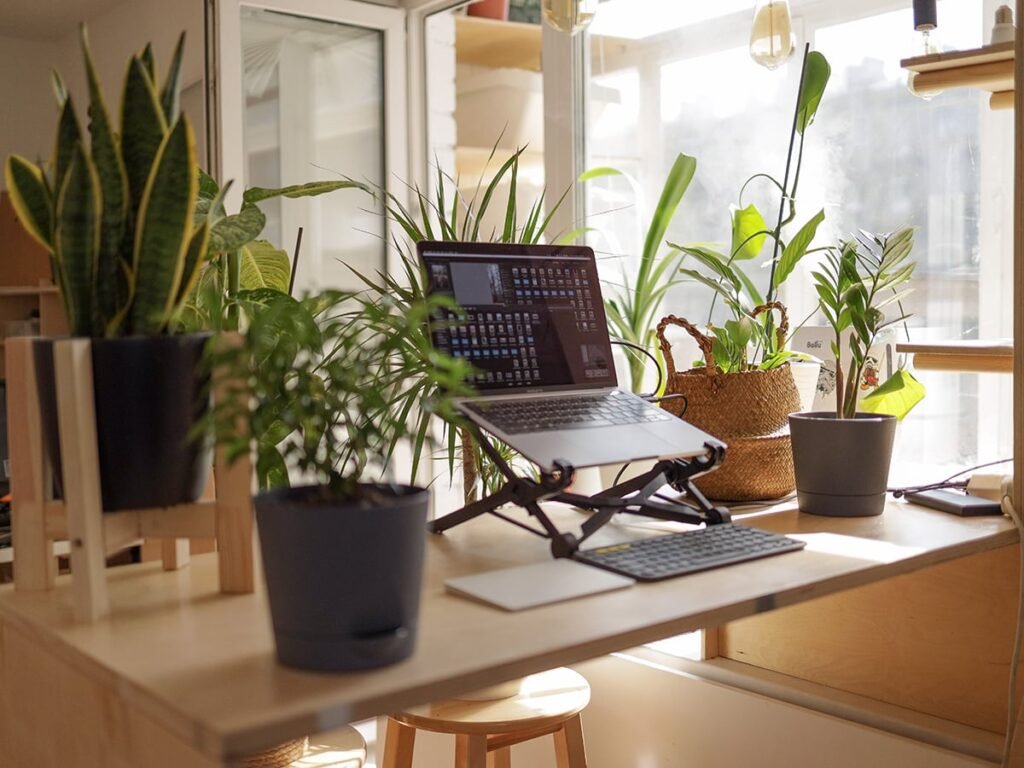In today’s world, the line between professional and personal life has blurred significantly. Remote work has become more than just a trend—it’s now a lifestyle for millions. Whether you’re a freelancer, a corporate employee working from home, or managing your own business, having a productive and healthy home work space is essential to maintain both performance and peace of mind.
Why Your Home Work Space Matters
Working from home may sound convenient, but without a designated and well-organized space, productivity can take a serious hit. Many people find themselves working from the couch, dining table, or even their bed, which can negatively impact posture, concentration, and mental clarity.
A proper home work space is not just about having a desk and chair. It’s about creating an environment that boosts focus, minimizes stress, and supports your physical and mental health. The right space can improve your motivation, work efficiency, and overall satisfaction with remote work life.
Choosing the Right Location
Your first step is to find the right spot in your home. If possible, choose a quiet area with minimal distractions. Ideally, this should be a separate room where you can close the door and signal to others that you’re working.
If space is limited, even a corner of a room can be transformed into an efficient home work space. The key is to physically and mentally separate your work area from leisure areas to prevent burnout and maintain work-life balance.
Essential Furniture for Comfort and Function
One of the most important components of a healthy home office is ergonomic furniture. Investing in a comfortable chair with lumbar support and a desk at the correct height can prevent long-term health issues such as back pain or repetitive strain injuries.
-
Desk: Choose a desk that suits your needs—whether it’s for a laptop, dual monitors, or paperwork. Standing desks are a great option for those looking to reduce sedentary time.
-
Chair: Your chair should support your back and allow your feet to rest flat on the ground. Adjustable chairs are ideal so you can fine-tune the height and tilt.
-
Lighting: Natural light is best, but if that’s not possible, use soft, white lighting to reduce eye strain. Avoid harsh overhead lights and instead use a desk lamp for focused work.
Organizing for Efficiency
Clutter can quickly become a productivity killer. A clean and organized home work space encourages mental clarity and better focus. Use drawers, shelves, and desk organizers to keep items tidy and within reach.
Labeling files, having a digital calendar, and creating a to-do list for each day can help you stay on track and minimize the feeling of being overwhelmed.
Incorporating Healthy Habits
Creating a productive home work space is not just about physical setup—it also involves supporting your mental and physical well-being.
-
Take Breaks: Use techniques like the Pomodoro method to remind yourself to take regular short breaks. Stretch, walk around, or do a few deep breathing exercises.
-
Hydration and Nutrition: Keep a bottle of water at your desk and avoid excessive snacking on junk food. Consider prepping healthy snacks ahead of time.
-
Move Around: Sitting for long hours is bad for health. Stand up, stretch, or even work standing for part of your day to keep your blood flowing and prevent fatigue.
Adding Personal Touches for Motivation
Your home work space should feel like your own. Adding personal elements such as plants, photos, or artwork can help create a more inspiring and enjoyable environment.
Plants, in particular, are known to reduce stress and boost productivity. Low-maintenance plants like succulents or peace lilies can be a great addition to your setup.
Tech Setup That Boosts Productivity
Technology is a major part of your remote work success. Ensure your home work space is equipped with all the necessary tools:
-
Stable Internet Connection: Invest in a good router or Wi-Fi extender if needed.
-
Headphones or Microphone: For clear communication in meetings.
-
External Monitor: Helps increase screen real estate and improve multitasking.
-
Keyboard and Mouse: Wireless versions keep your space clean and flexible.
Additionally, using productivity apps such as Trello, Notion, or Slack can streamline your workflow and make remote collaboration easier.
Establishing Boundaries
One of the biggest challenges in working from home is knowing when to stop. Without boundaries, work can easily spill into your personal time, leading to burnout.
Set a start and end time for your workday. Stick to this schedule as much as possible and avoid checking work emails or tasks after hours. When you physically leave your home work space, mentally disconnect as well.
You can also inform family members of your work hours and gently ask them to respect your space during those times.
Creating a Long-Term Sustainable Routine
Consistency is key. By developing a regular routine and maintaining your home work space, you can turn it into a hub of creativity and efficiency. Try to begin and end your workday the same way every day—whether it’s with a cup of coffee, five minutes of journaling, or a quick tidy-up of your desk.
Final Thoughts
Building a productive and healthy home work space isn’t a one-size-fits-all process. It requires thoughtful planning, some investment, and a commitment to ongoing improvement. Whether you’re working remotely temporarily or indefinitely, designing your workspace to support both your work and well-being will pay off in performance, energy, and peace of mind.
Take the time to evaluate your current setup and make small improvements where possible. You’ll be amazed at how much your work—and your mindset—can change just by optimizing the space around you.


